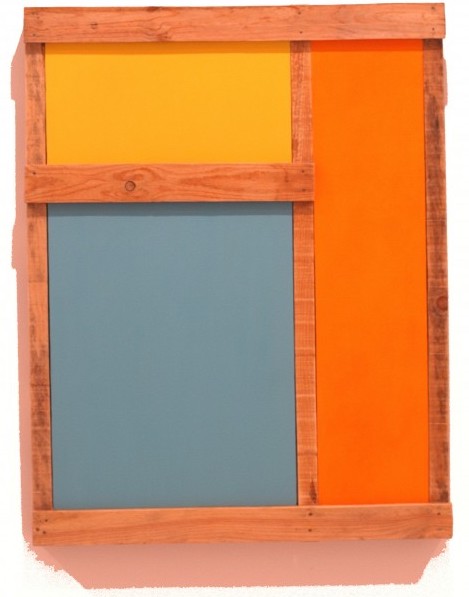Bernabé Gilabert, master of abstraction
The painter Bernabé Gilabert Barba was born in 1953 in Valdepeñas (Ciudad Real, Spain). This circumstance already influences him, as it is the birthplace of the painter of the Generation of ’27, Gregorio Prieto, and the city where the International Exhibition of Fine Arts has been celebrated for 83 years. From a young age, Bernabé Gilabert Barba eagerly awaited the arrival of September to admire each of the artworks presented there.
At the age of 19, Bernabé Gilabert Barba moved to the city of Madrid for work reasons, where he met painters Julian Gomez, Jose Luis de Antonio, and Jose Maria Gallego Lopez (a caricaturist), creating the studio on Calle de la Bola, where they shared space, conversations, critiques, and learned from each other for several years. He visited galleries and museums, enriching himself intellectually.
He received a scholarship from the Castilla La Mancha Foundation to attend Fine Arts courses in Almagro (Ciudad Real), taught by Manuel L. Villaseñor, Antonio López, José Antonio Vargas, Julio López, and Guijarro, among others. Influenced by his teachers from La Mancha and his studio mate Julian Gomez, he worked in a realistic style.
In the 1980s, he began participating in competitions, winning the first prize in the XV National Painting Contest of Campo de Criptana (Ciudad Real), the second prize in the Castilla-La Mancha Contest in Almagro, and the third prize, the Golden Grape, in the National Fine Arts Exhibition of Valdepeñas.
Around 1999, Bernabé Gilabert’s work started to evolve towards broader planes of color and more concise figurative forms, where color predominates, influenced by his studio mate Jose Luis de Antonio.
In the early years of the new century, planes of color became the protagonists of his work, leading to a geometric abstraction inherited from constructivism. Inspired by the color planes of the walls that are exposed when a dwelling collapses, he became obsessed with uninhabited spaces.
The plinth in a building is located at the bottom of the wall, but for Gilabert it is at visual height, losing part of its original meaning, reaching a hierarchy that was previously stolen. The artist observes the different limits of the plinths and the possibilities of association through their fragmentation, seeking through primary geometric forms a totality in permanent revision. He fills the planes with colours, these expand, creating pictures within the painting, planes that energise the monochrome statism.
These real spaces, full of light and colour, serve as an excuse to try to elevate through meditation and the artisan process the pleasure of contemplating something as simple as the union of different colour planes in the baseboards. Colour creates a space that could be inhabitable, although in reality it can only be penetrated by the eye and initiate a dream.
Valdepeñas (Ciudad Real) 1953 .-
Individual exhibitions:
2010 .- Torreón de Lozoya. Caja Segovia Segovia-OS
2009 .- Monasterio Santa Maria la Real de Nieva OS Caja Segovia
2008 .- CC Joan Miró-Mostoles
2006 .- Gallery Marita Segovia-Madrid-Museo A. Lopez Torres-Tomelloso .-
2005 .- City Museum-Valdepeñas
2002 .- Eklectica-Madrid Gallery
2000 .- Sabape-Valdepeñas Art Gallery
1999 .- Escuela de Arte La Palma, Madrid
Exhibitions:
2008 .- Artists Collective Gallery-Marita Segovia-Madrid International Exhibition-Stand ArtMadrid Marita Segovia Gallery
2006 .- MAEN-New Media-Center-Aymt.de Cultural Kaleidoscope Mostoles




